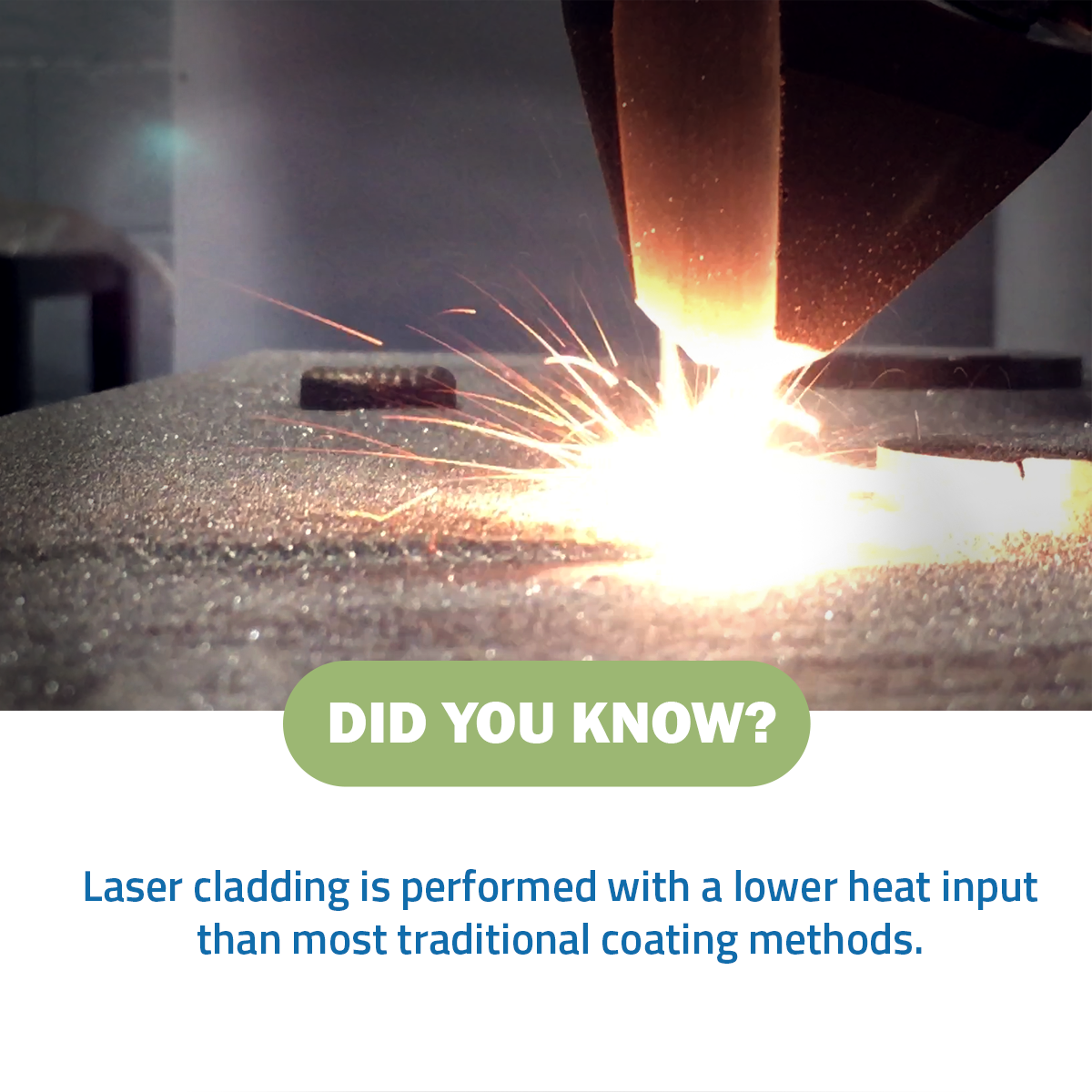
Our customers often ask about the impact of the Heat Affected Zone (HAZ) on their components, and for good reason. The HAZ can weaken the component and potentially lead to failure. But rather than crossing laser cladding off your list of preferred processes, there are ways to mitigate the HAZ.
What is the Heat Affected Zone (HAZ)?
The heat affected zone is a region just below the weld/base material interface. It’s an area of base material that was not melted, but the localized temperature was raised. This can cause the microstructure and material properties of the base material to change.
The depth of the HAZ can vary depending on process variables.
These variables include:
- Base metal type
- Thermal contact time
- Geometry of the component
- The amount of energy applied
How will the heat affected zone impact my components?
If the original material properties are critical to the design or performance criteria of the component, designers must consider the HAZ. This microstructure change can result in reduced strength, increased brittleness or lower corrosion resistance. The HAZ can definitely be an issue for more demanding applications, especially for the aerospace industry, industrial gas turbines, and for downhole applications in the oil & gas industries. However, designers will often take the HAZ into account when designing their components.
What is the smallest heat affected zone that you can achieve?
Unfortunately, the answer is not always straightforward. We have used the laser metal deposition (LMD) technique for our aerospace clients that resulted in a HAZ so small we were unable to measure it. However, the process techniques used to accomplish this may not always be economical for some of our other customers. A more general value for HAZ in most applications is around 0.003” – 0.008”.
Another solution for dealing with the HAZ is to perform a post-weld heat treatment (PWHT). However, depending on the components, this can sometimes be too costly or impractical. PWHT is not an ideal solution if there is concern about initiating distortion into other regions of the part.
Here’s where laser cladding offers an advantage
The laser cladding process allows us to control the heat input of the laser very precisely. Laser cladding produces a much smaller heat affected zone compared to PTA, GTAW or TIG welding, which have higher heat inputs. Components treated with laser cladding are more manufacturable, and may not require post-weld heat treatments.
This blog post just scratches the surface of this topic, so talk to your laser cladding specialist to discuss the specifics of the HAZ for your application and learn how you can beat the heat.
